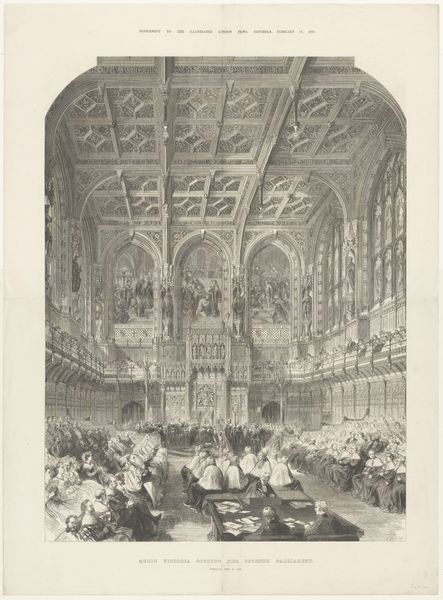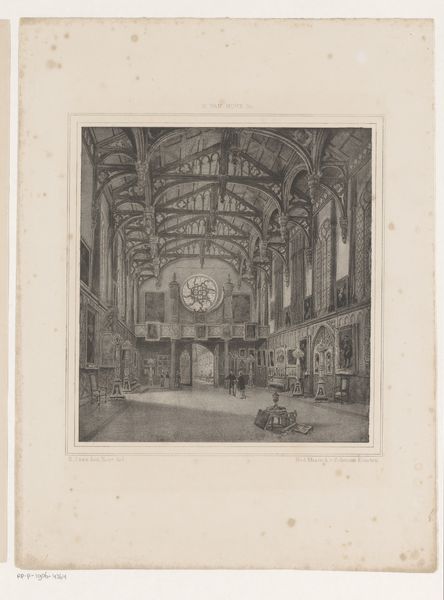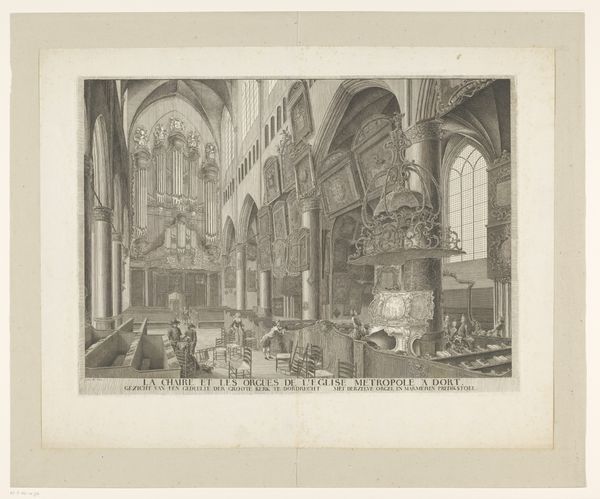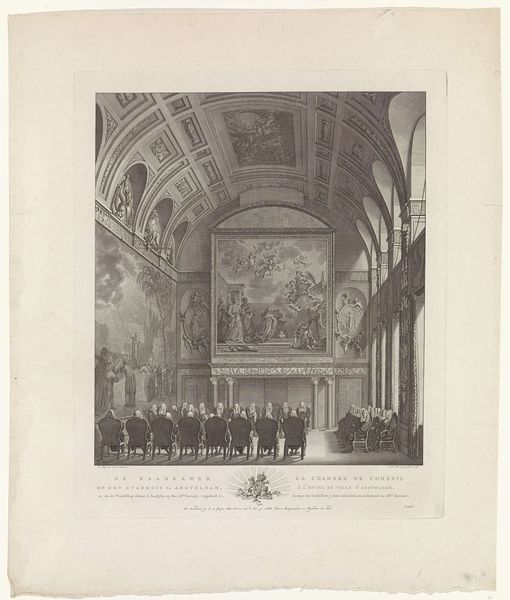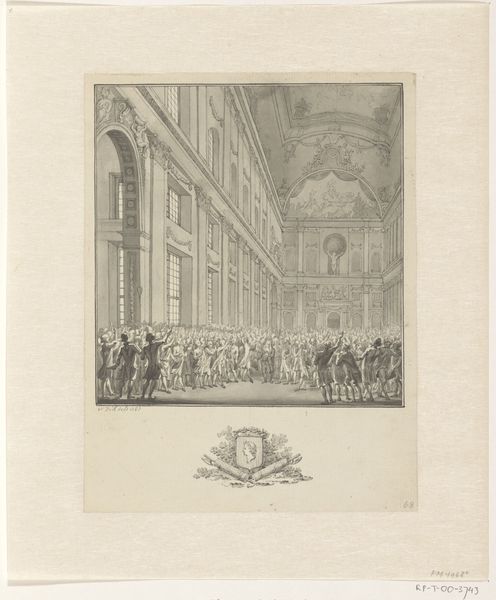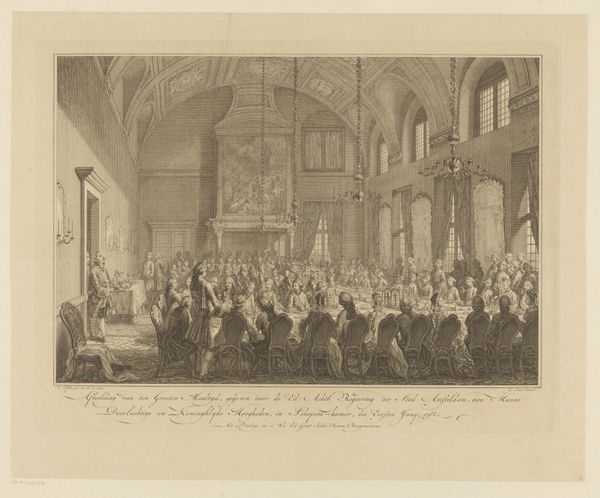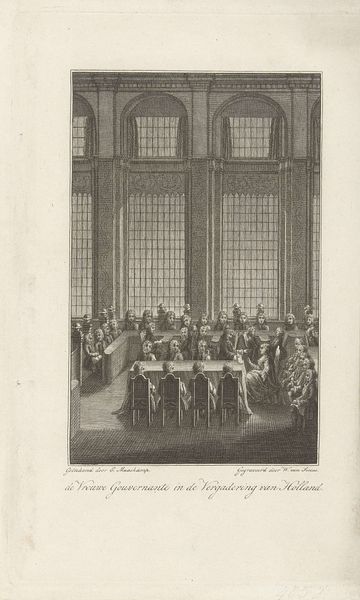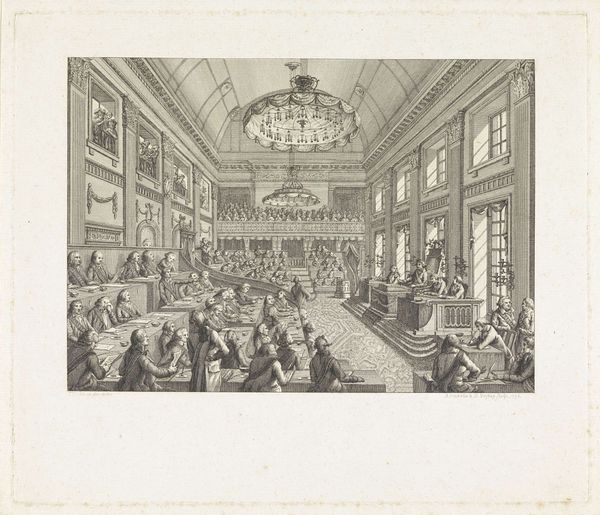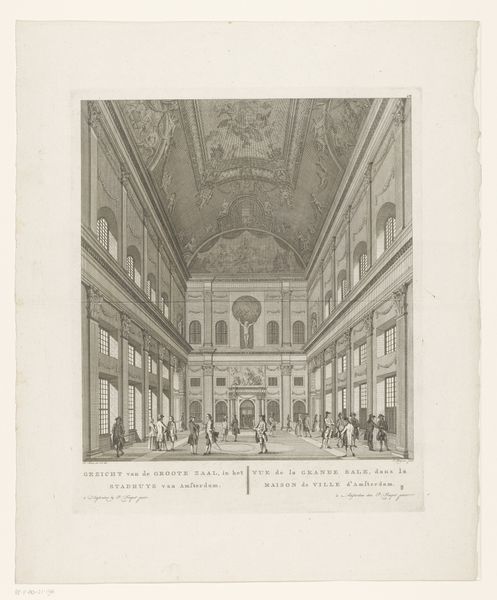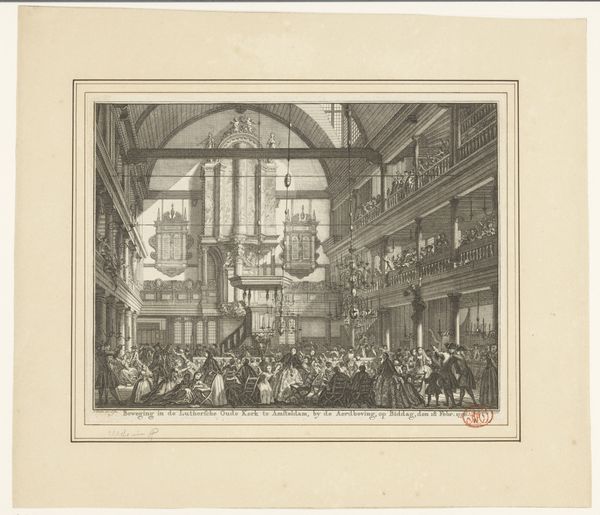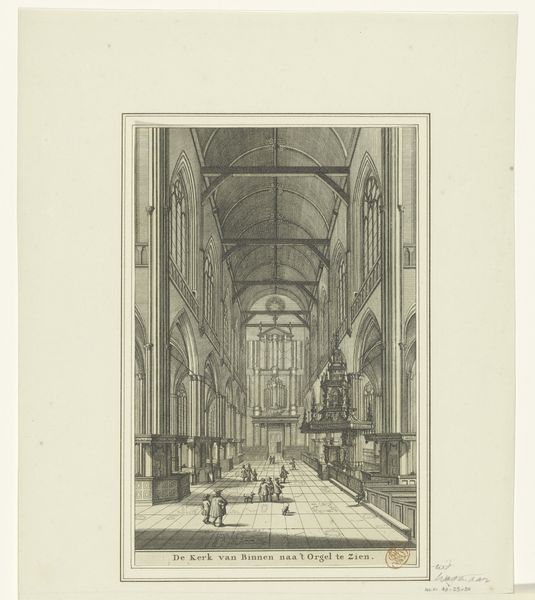
print, etching, engraving
#
baroque
# print
#
etching
#
old engraving style
#
etching
#
cityscape
#
genre-painting
#
engraving
Dimensions: height 173 mm, width 201 mm
Copyright: Rijks Museum: Open Domain
Editor: So, this is Jan Caspar Philips's engraving, "Synode gehouden in de Nieuwe Kerk te Amsterdam, 1730", dating from around 1738-1739. It's incredibly detailed! What really strikes me is the sheer number of people depicted and how they’re positioned within this grand architectural space. How would you approach understanding a work like this? Curator: Well, considering the synod itself, we need to think about production here: The Reformation had a profound effect on the socio-economic landscape of Europe and how labor was organised around new models of faith and governance. A highly detailed engraving like this demonstrates skilled artisanship, but also indicates access to resources, patronage, and a sophisticated system of print distribution. Editor: Right, the production process! The act of engraving itself—transforming an event into a reproducible image. Curator: Precisely. What's important is thinking about access, as these prints, circulated broadly, disseminating information, constructing specific narratives and establishing hierarchies. What does this make you consider about how prints like this served as a medium to establish a particular cultural viewpoint or system? Editor: That it provided access and enforced control; it created awareness but also served as political device for circulating information to the wider world. This print, as an artifact, highlights the distribution of religious power through materials and its own method of production. Curator: Indeed. Considering the social implications bound within materiality of print and its content lets us start to uncover a nuanced discussion around cultural influence, commercial ambition and community identity in 18th-century Amsterdam. Editor: So, seeing it as more than just a historical record opens it up to understanding social and political landscapes as being bound by materials. I see what you mean now. Thank you. Curator: Absolutely. There is power in process and material culture.
Comments
No comments
Be the first to comment and join the conversation on the ultimate creative platform.
